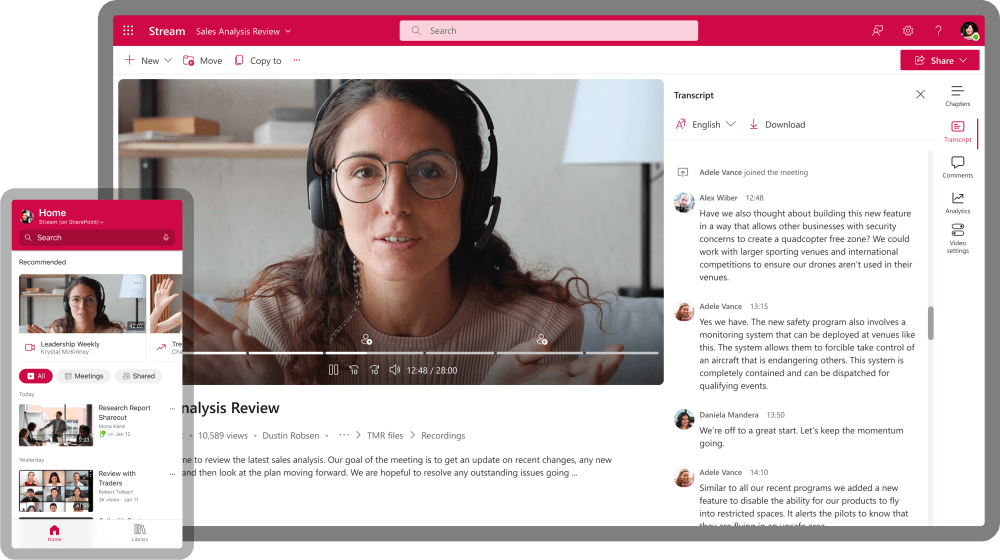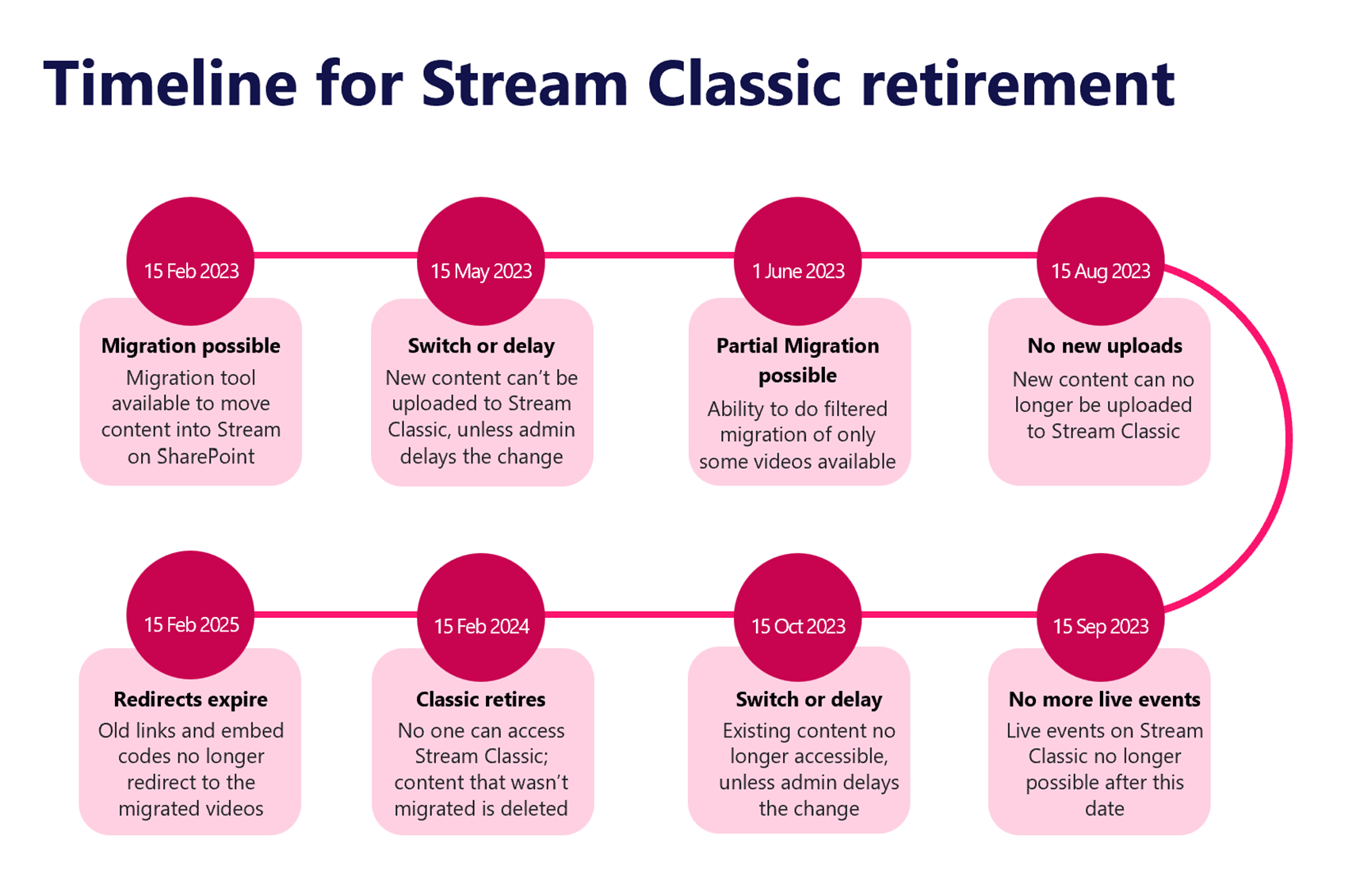
Published 21 February 2023
Adopt Microsoft’s Stream on SharePoint service today to help your organisation stay in the flow of work and reduce migration effort when Stream Classic retires!
With the rise of hybrid working, video content is becoming an essential tool in supporting employee engagement, knowledge sharing and asynchronous collaboration. Your Stream Classic portal is probably hosting a large body of organisational knowledge – in the form of training content, product demonstrations, case studies, webinar recordings, and all company corporate communications.
The retirement of Stream Classic is changing how such video content is managed on the Microsoft platform. Here’s what you need to know:

Stream Classic is retiring
Stream Classic’s successor – Stream on SharePoint, puts video in the flow of work. While Stream Classic was a standalone video hosting portal for storing and hosting video content, the new Stream on SharePoint is an integrated native video service that allows you to upload, manage and share videos from the same places in Microsoft 365 where you work with other files.
This means that your users can enjoy rich video playback and interaction capability directly from within SharePoint, Teams, OneDrive and Viva. This includes customising chapters, access to transcripts and close captions and commenting capability. Video discovery and sharing will also feel streamlined as search and access will work just the same as it does for other files like documents, presentations, and spreadsheets. The new Stream Start Page will allow users to get back to video content of interest quicker and discover new content easily.
Administrators will also benefit from Microsoft’s new approach to video content management. Stream Classic lacked document management capability such as version history, did not align with Microsoft’s compliance ecosystem, and had its own security and permissions model that impeded external sharing. Now, instead of managing a dedicated solution for videos, admins can leverage existing analytics, security and compliance services for video content, making governance activities involving eDiscovery, audits, legal holds and retention easier.
When is Stream Classic migrating to SharePoint?
The sooner you start planning your migration from Stream Classic to Stream on SharePoint, the smoother the transition is likely to be for your organisation! The following timeline outlines key dates you need to know about the upcoming retirement of Stream Classic.

Key impacts of migrating
Stream on SharePoint does represent a significant change to how video content has been managed in the past. While the overall experience for end-users and administrators is intended to be more intuitive and streamlined, helping everyone stay in the flow of work, there are some storage quota impacts worth noting.
Stream Classic came with its own storage allocation, going forward all migrated and new content for Stream on SharePoint will consume your existing file storage quota from OneDrive and SharePoint.
For this reason, organisations may want to consider decisions such as:
- Not migrating videos that have not been watched for a certain number of days
- Managing retention policies around meeting recordings so they are automatically deleted after a certain number of days
How can you prepare for Stream Classic’s retirement and its migration to SharePoint?
If you are still using Stream Classic, here are some steps you can take to prepare for the retirement of the service and the migration to the new version of Stream on SharePoint:
- Notify users: Add a custom message on Stream Classic informing them about the transition to Stream on SharePoint. Provide links to where they can find further information on timeline and training.
- Offer training and support: Have a communication and training plan ready to further raise awareness about the change and support your users through the transition
- Run the inventory report: Get an overview of the content that currently exists in Stream Classic to plan what content needs to be migrated and what can be left behind and deleted when the platform retires
- Contact power users: Reach out to users who are frequently uploading content into Stream Classic and get them used to the new Stream on SharePoint approach
- Redirect users to the new Stream app: Change the Stream app in Microsoft 365 to direct users to the new Stream start page instead of Stream Classic
- Restrict uploads: Remove ability to upload to Stream Classic so all new content is uploaded directly in SharePoint, OneDrive or other areas where users manage their files
- Migrate content: Use the migration tool to move the content you want to keep from Stream Classic into SharePoint
If your organisation is a heavy user of Stream Classic with a lot of content to migrate and many users to communicate the change to, then get in touch with our Change and Transformation team! We’ll help you plan a smooth migration and switch over to Stream on SharePoint.
About the author
Parul Sharma is a senior consultant with the Change and Transformation practice at Engage Squared. Parul is passionate about facilitating change in ways that enhance the employee experience and positively influence company culture. If she was to be reincarnated as a Microsoft emoji, it would probably be the earnest heart-eyed one 😍